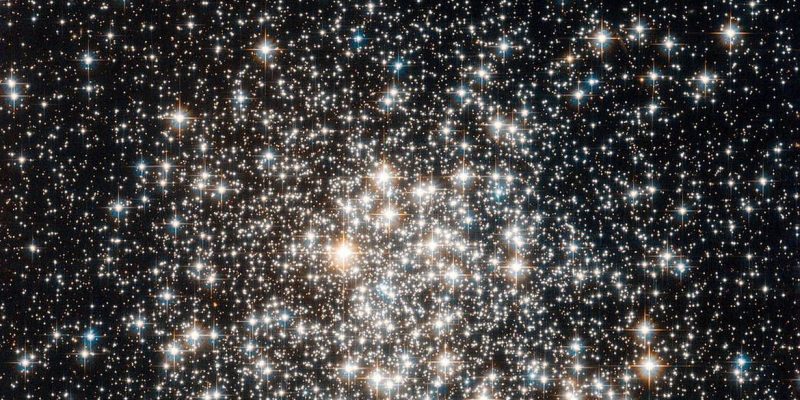
The NASA/ESA Hubble Space Telescope has captured a crowd of stars that looks rather like a stadium darkened before a show, lit only by the flashbulbs of the audience’s cameras. Yet the many stars of this object, known as Messier 107, are not a fleeting phenomenon, at least by human reckoning of time — these ancient stars have gleamed for many billions of years. Messier 107 is one of more than 150 globular star clusters found around the disc of the Milky Way galaxy. These spherical collections each contain hundreds of thousands of extremely old stars and are among the oldest objects in the Milky Way. The origin of globular clusters and their impact on galactic evolution remains somewhat unclear, so astronomers continue to study them through pictures such as this one obtained by Hubble. As globular clusters go, Messier 107 is not particularly dense. Visually comparing its appearance to other globular clusters, such as Messier 53 or Messier 54 reveals that the stars within Messier 107 are not packed as tightly, thereby making its members more distinct like individual fans in a stadium's stands. Messier 107 can be found in the constellation of Ophiuchus (The Serpent Bearer) and is located about 20 000 light-years from the Solar System. French astronomer Pierre Méchain first noted the object in 1782, and British astronomer William Herschel documented it independently a year later. A Canadian astronomer, Helen Sawyer Hogg, added Messier 107 to Charles Messier's famous astronomical catalogue in 1947. This picture was obtained with the Wide Field Camera of Hubble’s Advanced Camera for Surveys. The field of view is approximately 3.4 by 3.4 arcminutes.
A Nasa fará uma segunda tentativa de lançar seu novo e potente foguete para a Lua no sábado (3), depois de cancelar um voo de testes no começo da semana, disse um funcionário da agência espacial americana.
O lançamento estava previsto para a manhã da segunda-feira (29), mas foi cancelado porque o teste para conseguir que um dos quatro motores RS-25 do foguete alcançasse a temperatura adequada para a decolagem não teve êxito.
Mike Sarafin, responsável pela missão Artemis 1 na Nasa, anunciou a data da nova tentativa de lançamento – um passo-chave no programa americano que pretende voltar a levar astronautas à Lua – em uma coletiva de imprensa nesta terça-feira (30).
A meta da Artemis 1, batizada assim em referência à irmã gêmea do deus mitológico Apollo, testará o foguete de 98 metros com o Sistema de Lançamento Espacial e a cápsula Orion, adaptada para a tripulação, em sua parte mais alta.
A missão não leva tripulantes, mas manequins equipados com sensores que vão registrar aceleração, vibração e níveis de radiação.
Dezenas de milhares de pessoas, incluindo a vice-presidente americana Kamala Harris, se reuniram para observar o lançamento, que acontece 50 anos depois que os astronautas da Apollo 17 pisaram na Lua pela última vez.
Da AFP









Comentários